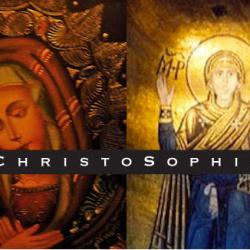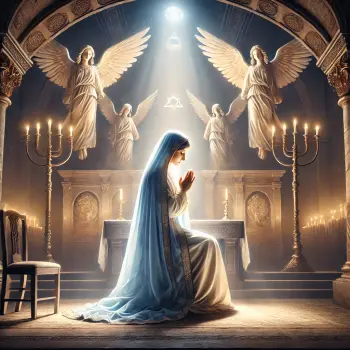The story of the Michigan Relics is inseparably connected with my family. This legacy — packed with controversy and historical mystery — has united believers, divided scholars, and ignited intense debates everywhere in between. These relics, once in the trusted custody of my grandfather, Milton R. Hunter, continue to be labeled either as a hoax or a lost, sacred collection of religious artifacts that deserves to be studied.
A Family Thing
In addition to being a University of California, Berkeley trained historian and noted author, my grandfather was a member of the First Quorum of Seventy, a high leadership position within the Church of Jesus Christ of Latter-Day Saints (LDS or Mormon Church). He wrote extensively about archaeology, and as I grew up I devoured his books about ancient cultures in South and Central America. And although he didn’t publish about the Michigan Relics, he believed that they were genuine artifacts – at least some of them. Therefore, my interest in the Michigan Relics began at a young age.
The relics—inscribed clay, slate, and copper tablets and religious implements containing Jewish, Coptic Christian and Gnostic symbology—were to my grandfather a sacred collection, a potential bridge to the little understood history of the American Mound Builders. The Michigan Relics, also known as the Soper-Savage Collection, have sparked considerable debate and controversy since their discovery in the late 19th and early 20th centuries. These artifacts, numbering in the thousands, were actively excavated from Native American mounds throughout Michigan 1890 to 1920. One of the most intriguing aspects of these artifacts is a recurrent symbol which has been coined the Mystic Symbol and contains elements similar to those found in ancient Israel.
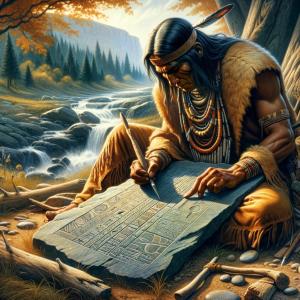
The discovery of these artifacts was initially met with excitement as they seemed to offer tangible proof of pre-Columbian contact between the Old and New Worlds. Elder Milton R. Hunter, along with other members of the LDS Church, speculated that the artifacts could provide evidence supporting the claims made in the Book of Mormon about Christ’s interactions with the ancient peoples of the Americas. Upon his death in 1975 he willed the collection to be donated to the LDS Church so that they could be studied and researched.
Many scholars, however, remained skeptical of the relics. Among them was one of the LDS Church’s own, Richard B. Stamps, who put his definite disapproval on the collection and classified them as a hoax. Stamp’s evaluation helped pave the way for further scholarly criticism, casting a long shadow over the Michigan Relics and causing many researchers who may have expressed interest to disregard the collection’s potential historical value without a second glance.
The LDS Church places a high priority on avoiding controversy and safeguarding its public image, and thus decided to donate the entire Soper-Savage collection to the Michigan History Museum. My family agreed to this only on the strict condition that the collection would be taken seriously and studied with academic rigor. However, upon receiving the collection, the museum promptly displayed the artifacts as a fraudulent collection.
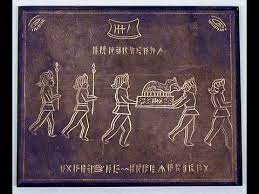
A Betrayal
The betrayal stung my family as this was precisely what my Grandfather did not want to happen. Instead of being respected, the collection was mocked and paraded as a hoax, poking fun at the very notion of ancient cultures crossing the seas to settle in the Americas. Shock and regret reverberated through our family as we witnessed the cold dismissal of my grandfather’s legacy.
In 2015 I took up the call to get the artifacts returned to our family so they could be honestly studied. I visited the museum, and as a public relations professional, I brought with me Ryan Fisher, a documentary film maker who captured video of the collection during the visit. He issued a short documentary with the hopes of drawing some attention to the issue. I then met with the LDS Church’s history department for support. However, they unapologetically explained that due to the legal circumstances of the donation they were unable to offer assistance. I also contacted and met with a lawyer, but ultimately having the relics returned to my family was legally challenging, if not impossible.
The artifacts’ authenticity remains a topic of hot debate to this day, with researchers such as Wayne May promoting their authenticity and skeptics like Richard Stamps decrying their value. My quest to reclaim the artifacts became not only a personal mission, it also became a fight for academic integrity. For the right of every enigmatic piece of history to have its day in the court of scholarly debate. It is a battle against the dogmatic scholarly prejudice which has become so commonplace in the fields of archeology and anthropology.
Weighing Both Sides
In my pursuit of fairness, I sought to avoid replicating the biases and shortcomings evident in the work of certain scholars. I studied the criticisms, most of which centered around relics’ suspicious provenance and anachronistic nature. The collection, purportedly dating back to ancient times, includes a mix of tablets, weapons, and religious items inscribed with what seems to be a mixture of Near Eastern and European symbols and iconography. These skeptics argue that the eclectic combination of styles and symbols on the artifacts do not correspond with the linguistic and cultural patterns of any known ancient civilization. Furthermore, the appearance of these items in the late 19th and early 20th centuries coincides with a period when interest in ancient cultures and pseudo-archaeological finds was particularly high, suggesting that they may have been created to satisfy the era’s demand for such objects.
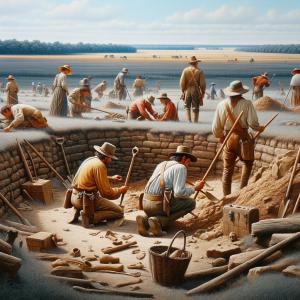
Another compelling argument against the legitimacy of the Michigan Relics is the manner in which they were discovered. Many of the items were supposedly found by individuals, most prominently James O. Scotford and Daniel E. Soper (whom the collection was named for), who had no formal archaeological training. The relics were also found in locations that have no other archaeological evidence of ancient civilizations that would correspond to the nature of the artifacts (other than the mounds themselves). This lack of contextual integrity, coupled with the absence of any subsequent findings despite extensive archaeological work in the region, points to the possibility of a hoax.
However, scholars like Henriette Mertz, a brilliant cryptographer and code breaker during World War Two, put forward several arguments in support of the authenticity of the Michigan Relics. Her examination highlighted the diversity in script and writing style across the artifacts, suggesting they were the work of multiple individuals using different instruments, which would be inconsistent with the actions of a single forger or a small group of conspirators. She also noted that the sheer number of artifacts, cataloged in the thousands and found over several decades, would require a significant and unlikely conspiracy if they were all forgeries.
In addition, Mertz addressed the content of the tablets which depicted scenes with theological implications that were non-conformist and even heretical by traditional Christian standards, suggesting a complexity that would be unusually sophisticated for a simple hoax. She argued that the inclusion of what appeared to be pagan deities being revered alongside biblical figures was further evidence of the tablets’ authenticity as it would be an unlikely choice for a forger in a conservative 19th-century American setting. Additionally, the scripts on some artifacts were extremely complex, incorporating writing styles like Boustrophedon which is found in Hebrew and Arabic script (a style of writing in which alternate lines of writing are reversed), and would be very difficult to forge convincingly during this time period as Hebrew was little understood in the West.
Perhaps one of my favorite pieces of evidence was discovered by researcher David Allen Deal and involves one of the calendar tablets containing astronomical data pointing to a solar eclipse that historical records confirm was observable from the artifact’s discovery site in AD 342. These remarkable findings present a real challenge to skeptics, raising the question of how supposed nineteenth-century forgers could have accurately incorporated such specific historical and astronomical data.
Additionally, the discovery of calendar wheels among the artifacts suggest a Saturday Sabbath observance which was common in the early Christian era before the shift to a Sunday Sabbath by Emperor Constantine in AD 313.
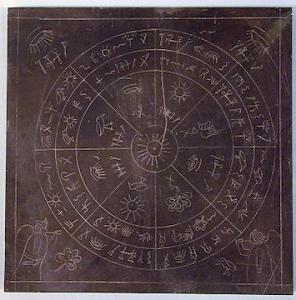
Redefining Our History
I often ponder – what truths could these relics yield if given an honest appraisal? There are several groups today that have expressed interest in funding a museum to showcase the collection in an authentic way. But alas, the situation remains a legal one.
Could the Soper-Savage Collection redefine our understanding of history, or are the relics merely the remnants of a bygone hoax, as many scholars so hastily concluded? And is it possible that some of the relics are authentic but many copycat fakes made their way into the collection? Unfortunately, history shows us that a single forgery in the midst of a collection of genuine artifacts tends to spoil the whole lot. The answers are elusive, buried and concealed like the artifacts themselves once were.
My grandfather believed in the potential of the Michigan Relics to open doors to the past and to illuminate the unknown corridors of our history. In his eyes, they were a tangible connection to those who walked before us. Whether this view is accurate or not, the Soper-Savage Collection should be honored for its place in American religious history.




